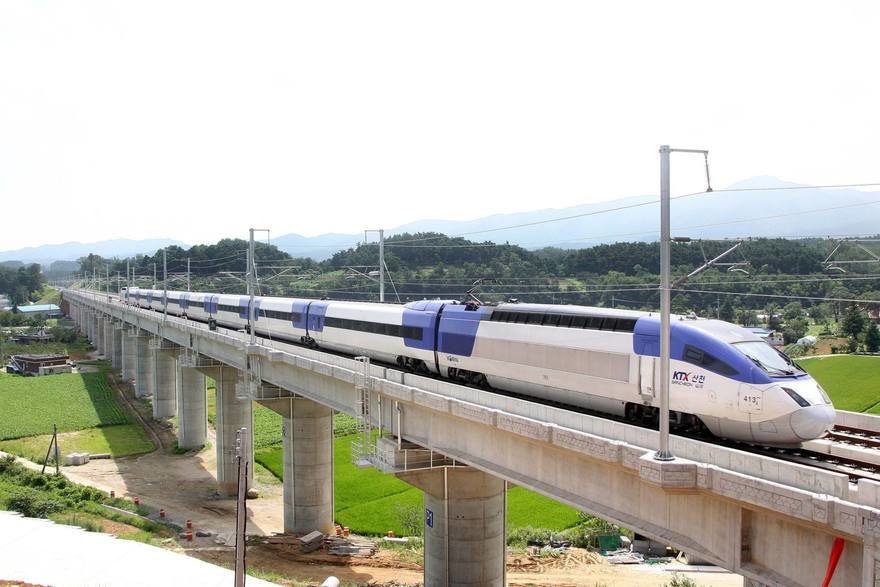#HTE
What’s It Like Inside the Olympic Village?
To an Olympian, it must feel like a version of Freshman Orientation where everyone is super physically-fit: For roughly two weeks they’ll stay in a purpose-built dorm-like Olympic Village, meeting (and frequently hooking up with) fellow athletes from around the world. Entertainment and training facilities are provided; there are gyms, recreation rooms, massage chair facilities, lounges, medical and dental facilities, and even a McDonald’s.







McDonald’s aside, all other meals are provided in a massive 24-hour cafeteria.

“It is a food court like no other,” according to Korea’s Yonhap News. “It has a variety of dishes, drinks and snacks, but is aimed at offering the world’s elite athletes healthy, hearty food at all hours. Some 180 chefs, including 30 halal cooks, are working in the kitchen to prepare 180 dishes every day. The menu changes every seven days with a total of 406 dishes.
"At its peak, the athletes’ village kitchen will serve 7,000 meals daily.”
To keep the athlete’s heads clear, media and press members are strictly barred from the village. (They’re housed in a separate Media Village.)
Anyways, so here’s what it’s like being there: You land in Seoul, then get whisked to Pyeongchang via high-speed rail.



Then to the completed village. There are actually two villages, one in Pyeongchang proper and another in nearby Gangneung. (Basically if your sport involves skates, you’re staying at Gangneung near the ice facilities. Everyone else shacks up at Pyeongchang.)
South Korea spent two years getting the Olympic Villages built.



Here’s a walkthrough of the rooms after completion, prior to the Olympics:



The rooms might look Spartan, but those shots are of the rooms before they’re decorated. Here’s Team Great Britain snowboarder Aimee Fuller giving you a look at the Brits’ dressed-up digs, some of the swag (yes, they get to keep those comforters) and the all-important dining hall:
Tour of facilities and rooms by Team Ireland:
A Canadian skeleton coach for Team Australia runs down his suite. Look for the nifty pop-out smartphone stand in the bathroom around 5:41:
 This magic fob grants you free access to all drinks in the vending machines.
This magic fob grants you free access to all drinks in the vending machines.
 This thing that puzzles him in the video is next to the toilet and built into the bathroom wall. It’s a pop-out smartphone stand.
This thing that puzzles him in the video is next to the toilet and built into the bathroom wall. It’s a pop-out smartphone stand.
There are also thousands of journalists on hand, from around the world. The Media Village has a less splashy dining hall than the athletes get but it offers a similar selection. Also cool to see that they separate and recycle everything:
I keep coming back to the food because I’m impressed by the logistics of it. Food & Wine reports:
What exactly does it take to keep the world’s best bodies in competition-ready shape? The dining hall—which will be open 24/7—has a hefty 18-page menu full of options. A sampling: Fresh veggies and a whole range of protein options (duh), a pizza and pasta bar, regional Korean fare, halal food, and even McDonald’s. (You’d think that each athlete would have a finely tuned nutrition regimen, filled with adaptogens and supergreens—but if downing a pizza topped with anchovies and ranch dressing helps you win, the Olympic committee is not going to judge you, it turns out.) And for breakfast, there’s a selection of pastries or dry cereal.
I looked through the menu and it’s insane. It makes me wish I was a competing Olympian rather than an out-of-shape design blogger.

With a 24-hour cafeteria, the athletes have no need to prepare their own food back at their suites. In fact it’d be impossible–all of the kitchen surfaces and appliances are sealed in plastic.

Why? Because building Olympic venues ain’t cheap, and the South Korean government has reportedly spent nearly $13 billion. To help offset the cost, the Olympic Village units have already been sold–yes, all of them–as condominiums. After the athletes move out, the kitchens get unwrapped, and families move in.
Some of the athletic facilities themselves will continue to fulfill their functions after the Games have left, but to date they can’t figure out what to do with the $120 million speed skating oval. “A local company,” CBS News reports, “did say it would be a great place for storing frozen fish.”

http://www.core77.com/posts/73431/Whats-It-Like-Inside-the-Olympic-Village
